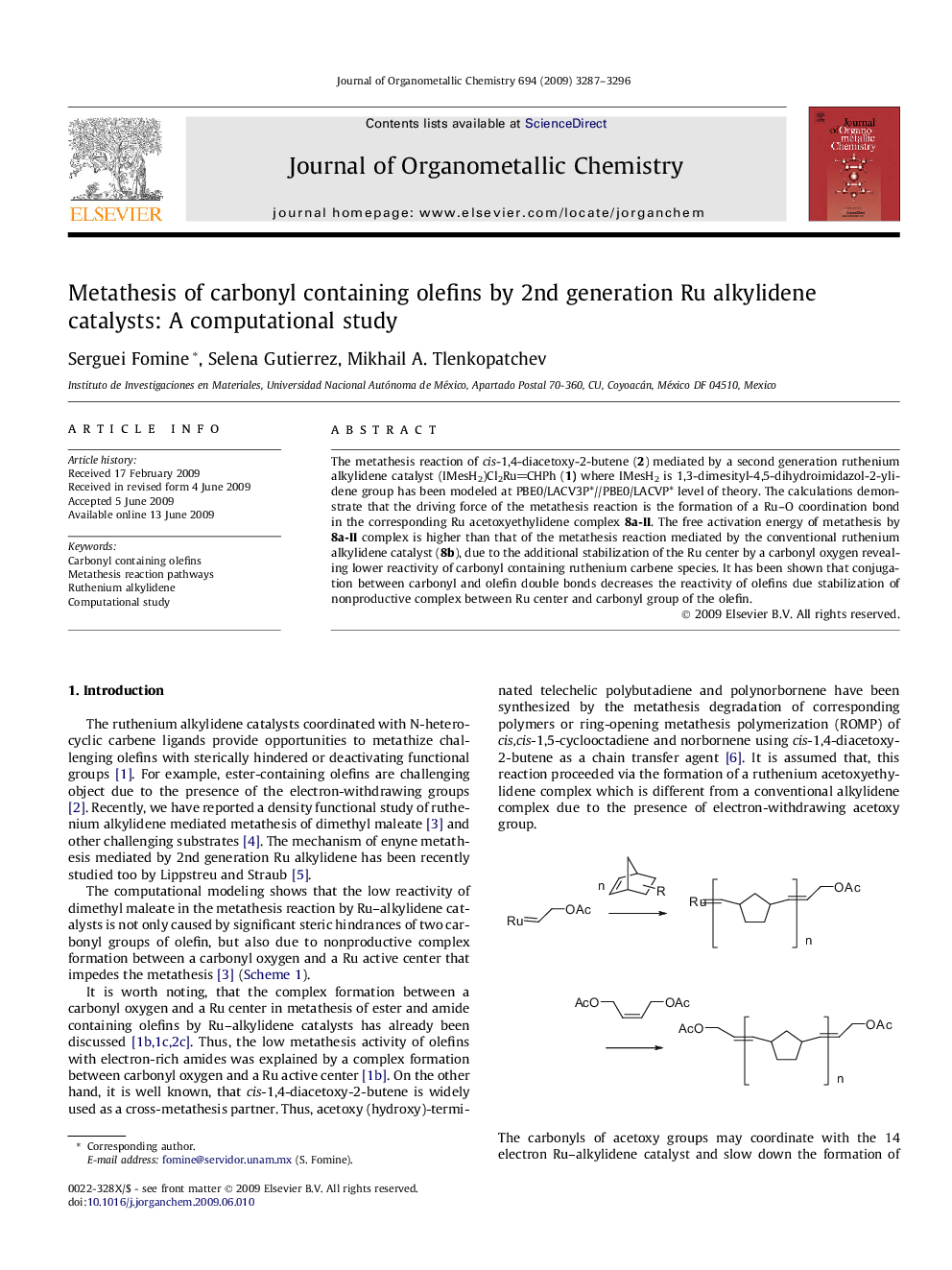| Article ID | Journal | Published Year | Pages | File Type |
|---|---|---|---|---|
| 1326288 | Journal of Organometallic Chemistry | 2009 | 10 Pages |
The metathesis reaction of cis-1,4-diacetoxy-2-butene (2) mediated by a second generation ruthenium alkylidene catalyst (IMesH2)Cl2RuCHPh (1) where IMesH2 is 1,3-dimesityl-4,5-dihydroimidazol-2-ylidene group has been modeled at PBE0/LACV3P*//PBE0/LACVP* level of theory. The calculations demonstrate that the driving force of the metathesis reaction is the formation of a Ru–O coordination bond in the corresponding Ru acetoxyethylidene complex 8a-II. The free activation energy of metathesis by 8a-II complex is higher than that of the metathesis reaction mediated by the conventional ruthenium alkylidene catalyst (8b), due to the additional stabilization of the Ru center by a carbonyl oxygen revealing lower reactivity of carbonyl containing ruthenium carbene species. It has been shown that conjugation between carbonyl and olefin double bonds decreases the reactivity of olefins due stabilization of nonproductive complex between Ru center and carbonyl group of the olefin.
Graphical abstractThe driving force of the metathesis reaction is the formation of a Ru–O coordination bond in the corresponding Ru acetoxyethylidene complex 8a Additional stabilization of Ru center by carbony oxygen in 8a reduces the activity of the complex as a catalyst.Figure optionsDownload full-size imageDownload as PowerPoint slide
